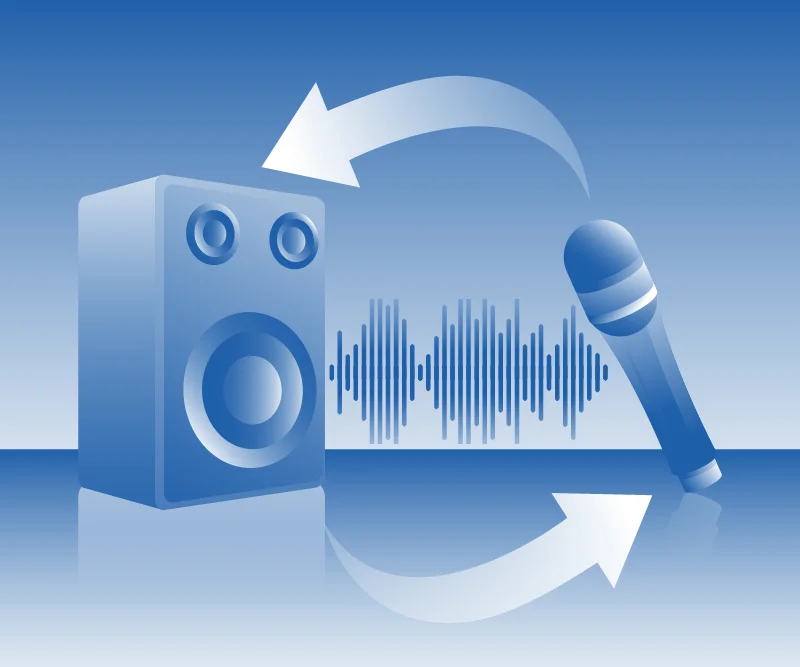| c |
|
 |
|
Acoustic Feedback (also known as Audio Feedback or Larsen effect) occurs in an electro-acoustic system when there are two simultaneous couplings:

When the total system gains G(f) = A(f) x B(f) exceeds one, the signal is amplified and amplified again leading to the so called “howling” or “whistling” effect depending on the frequency range where such positive feedback initially occurs. Acoustic Feedback problems are typical for sound reinforcement systems, karaoke systems and hearing aids. It also occurs frequently in intercom systems and other communication devices when voice terminals are in close proximity to each other. Alango Acoustic Feedback Reduction (AFR) technology significantly alleviates the problem of acoustic coupling. Alango AFR relies on several mechanisms that work simultaneously and cooperatively. 
The block of Sub-band Adaptive Filters simulate acoustic coupling between the speaker and the microphone independently in a large number of narrow frequency bands. The estimated “echo” of the loudspeaker in each band is subtracted from the microphone. Traditional approaches of feedback reduction using adaptive filters suffer from slow convergence, feedback oscillations and distortion of the user’s voice. Alango technology is based on its industry proven sub-band acoustic echo cancellation technology that simultaneously demonstrates very fast convergence and high stability. The result of adaptive filtering is fed into the Noise and Howling Suppressor, which reduces the amount of stationary noise present in the microphone signal before being reproduced by the loudspeaker. It also reduces tonal signals thus preventing feedback in a specific frequency region rising to a disturbing level. Quasi Proportional Frequency Shifting (QPFS) technology introduces a small unnoticeable change in the pitch of the loudspeaker sound. Compared with a simple frequency shift, QPFS approximately keeps the correspondence of original sound harmonics thus introducing much smaller sound distortion. 
Comparing to general pitch shifting technologies, QPFS does not introduce a significant processing delay. While QPFS reduces the acoustic feedback by itself, it is even more important for the performance of adaptive filters. Frequency shifting effectively performs decorrelation of the user’s voice with its loudspeaker replica thus improving the convergence of adaptive filters and preventing distortion of the user’s voice caused by short time speech correlation.
AFR technology is a part of Alango’s Sound Reinforcement Package (SRP). SRP is available for the major MCU and DSP cores. Please, contact for more details.
https://en.wikipedia.org/wiki/Audio_feedback http://hearinghealthmatters.org/waynesworld/2012/hearing-aid-acoustic-feedback/ More detailed technical information and examples are available upon request. |